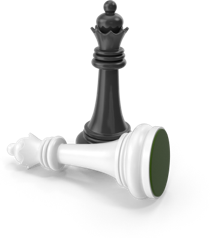Cryptocurrency exchanges, markets & orderbooks explained

This article will give you an overview of how cryptocurrency exchanges, markets and orderbooks operate. The world of crypto can be overwhelming if you’re new, so we’ve tried to answer some of the most common questions about our exchange and how it all works.
First, here’s a few things you need to know about cryptocurrency trading
- The crypto market is highly volatile compared to other financial markets. There is potential for big gains as well as losses.
- A cryptocurrency exchange is not part of the traditional stock exchange
- Crypto never sleeps – it’s a 24-hour market
- Cryptocurrency is MUCH more than just Bitcoin
- Getting involved in cryptocurrency has never been safer & more accessible
Key Takeaways
- Cryptocurrency exchanges are a marketplace for buying/selling cryptocurrency
- An exchange’s order book is a list of ALL the open orders
- Exchanges get their prices from a variety of markets, resulting in slight price differences across exchanges
- The difference between buy/sell prices are called ‘spreads’
What is a cryptocurrency exchange?
A cryptocurrency exchange is a digital marketplace that connects buyers and sellers. They are easy-to-use platforms that allow you to buy a variety of cryptocurrencies with either regular fiat money (AUD, USD, etc.) or other cryptocurrencies.
- Cryptocurrency exchanges allow cryptocurrencies to be bought/sold without the need to involve a bank or government (though most reputable ones require a know your customer (KYC) check).
- Exchanges work like brokerages, where a buyer places an order at a specific price, which is filled (a trade occurs) when a seller offers the asset at that price.
- The prices of assets on an exchange are shown on an ‘order book’ which is dictated by the market (real people offering to buy/sell crypto assets at specific prices).
- You can store your crypto assets in your digital wallet that will be provided by the exchange.
- Crypto exchanges also offer customer support and a wide range of trading features.
We’ll get into exactly how an exchange gets its prices (and why prices differ across different exchanges) in a moment, but first let’s cover some of the basics.

What is an ‘order’ or ‘open order’?
An order book is the list of all ‘open orders’ that are currently available on an exchange for a specific trading pair (Digital Surge allows you to buy crypto direct with AUD, our trading pairs are often BTC/AUD, ETH/AUD, ADA/AUD, etc.)
An ‘order’ or ‘open order’ is essentially an investor saying they are willing to buy or sell an asset at a specific price. For instance, I could place an open order to buy BTC at a price of $ 50,000 AUD, which would then be ‘filled’ or executed when someone placed an open order to sell BTC at my desired price.
What is an order book?
An exchange’s order book is a list of ALL the open orders on a specific trading pair (e.g. BTC/AUD, ETH/USD, BTC/ADA). It can be seen as a marketplace of buyers and sellers trading with each other.
Anyone can place an open buy/sell order, which is a kind of offer to buy/sell at a specific price. This order will remain on the order book until the person either cancels the order or someone else places an order that meets the desired price of that order.
EXAMPLE
I place an order to buy Bitcoin for $50,000. Someone else on the exchange will need to agree to sell Bitcoin at the same price of $50,000 for this order to be filled/completed.
Note: Placing an order on the order book does not guarantee someone else will meet your price and take the offer. If someone else on the exchange has placed a better order (an order to buy at a higher price or sell at a lower price) that order will be taken and filled first.

How do I place an order that will get filled?
If you want to place an order that will be filled in a timely manner, we must either take an existing order on the order book, or list a competitive price so that our order gets filled before other traders.
It is tempting to set a buy/sell order at a price you are happy with (after all, who doesn’t like buying/selling at a great price?), but we then run the risk of our order not being filled due to other traders offering better orders than our own.
EXAMPLE
If I placed an order to sell BTC at $100,000, but the current market price was only $60,000, this order would likely not be filled until the market price increased significantly.
Other traders may have placed orders to sell BTC at $61,000, and buyers must first take those better offers before they can take your offer of $100,000. This ‘best offer’ system is automatically enforced by exchanges to ensure you get the best price and don’t accidentally take worse offers than necessary.
What is market price?
The current price of an asset on the market. The market price should be roughly the average of the price across a number of exchanges.

What is liquidity?
Liquidity refers to the ease with which a cryptocurrency can be bought and sold for fiat currency or another cryptocurrency without affecting its market price.
How does trading with an exchange work?
- Users transfer money or existing crypto to their account on the exchange, which the exchange securely stores.
- The user can buy/sell crypto with the assets in their account by placing a buy/sell ‘order’. (Note: Not all exchanges allow you to purchase crypto direct with fiat (AUD/USD))
- Once an order is placed, the exchange finds a seller or buyer to match your trade
- Once a buyer/seller is found, the exchange then facilitates the trade and completes your transaction.
Why are prices on different exchanges different?
Each exchange goes to a range of markets, both international and local to get their prices for any given coin. While the prices across exchanges are generally pretty similar, there will be a slight difference due to the fact that there are multiple markets for any given cryptocurrency.
Why are the buy & sell prices different on an exchange?
In any market, cryptocurrency or otherwise, there will always be a difference in price between what buyers and sellers are willing to trade at. These are called spreads.
What are spreads?
The spread is the difference between the highest bid price and the lowest ask price on an exchange’s orderbook.
Example:
Imagine you are negotiating a deal to buy Ethereum from someone. You might say you want to buy one Ethereum for $3,000, but the seller might respond by saying they will only sell 1 Ethereum for $4,000. Thus, the spread would be $4000 – $3000 = $1000 (the spread).
If you were to buy 1 Ethereum (at the lowest ask price), it would cost you $4,000. This means, however, that in order for you to sell that 1 Ethereum, the bid price would have to increase by at least $1000 before you could receive a profit (as the highest bid price is only $3000).
This is why trading over a large spread can be costly, highlighting the need to take spreads into account. The tighter (smaller) the spread, the better the deal. You can see a comparison table of trading fees and spreads here.
In theory, it’s easier to make a profit on an asset with a small spread than one with a large spread since the asset needs to perform better when the spread is larger.
Why are spreads important to consider?
Spreads can save or cost you a significant amount of money. Did you know that choosing an exchange with good spreads is often more important than the fees you incur while trading? In fact, spreads are a common place for exchanges to stash hidden fees that they don’t state upfront!
Many exchanges claim to have low or even no fees and some even state they charge no fees whatsoever only to sneakily take their cut by giving you a much lower rate on any given coin. Not ideal! This is something you will never experience with Digital Surge!
When choosing an exchange, be sure to factor in spreads, currency conversion fees, and withdrawal/deposit fees along with the normal trading fees – they can cost you a fortune down-the-line!
How differently do cryptocurrency markets & traditional financial markets operate?
While cryptocurrency markets do differ from traditional markets in many ways (they are open 24/7, for example), from a trader’s perspective, they operate in a similar fashion.
Crypto assets can be traded via exchanges and brokers. Exchanges in particular can be likened to the regular stock exchange in that it is an open marketplace that connects buyers and sellers who can trade with each other.
What is slippage?
When you place a buy or sell order on a crypto exchange, the exact price you see is not always the price you get (unless you use a platform with instant orders/guaranteed quotes)! When your order is filled at a different price than you expected, this is called slippage.
Slippage happens when traders have to settle for a different price than what they initially requested due to a price movement between the time an order is placed and the execution of a trade. Slippage occurs in all markets, like forex and stocks, however, it is more common in crypto markets (especially on decentralized exchanges like Uniswap) due to its high volatility. Additionally, some altcoins suffer substantially from slippage due to their relatively low trading volume and liquidity.
There are two types of slippages: positive and negative. If the actual executed price is lower than the expected price for a buy order, it is considered positive slippage since it gives traders a better rate than they originally intended. If the actual executed price is higher than the expected price for a buy order, it is considered negative slippage since it gives traders a less favourable rate than they originally tried to execute. The opposite is true for sell orders.
If you are trading regularly, slippage can be costly. One way to avoid slippage is to place instant orders instead of market orders. This guarantees that the price you want is the price you get. Trigger orders don’t guarantee the price, and we are in the process of introducing larger instant orders above $10k (that are also not guaranteed).
What moves cryptocurrency markets?
Like most financial markets, cryptocurrency markets move according to supply and demand. However, as they are decentralised, they are inherently a different kind of asset class and must be treated accordingly. Some of the factors that can affect the prices of cryptocurrencies include:
- Press/Social media: the way the cryptocurrency is portrayed in the media and how much coverage it is getting.
- Mainstream adoption: the extent to which the cryptocurrency fills the market’s demands and how well it integrates into existing infrastructure such as e-commerce payment systems.
- Notable events: major events such as technological improvements, regulatory updates, company announcements, celebrity or institutional adoption, security breaches and economic setbacks.
- Supply: the total number of coins and the rate at which they are released.
- Market capitalisation: the total value of all the coins in existence and how users perceive the coin to be developing.
If you’re still unsure whether you want to get involved in the world of crypto, check out our guide on if investing in cryptocurrency is for you.
Did this answer your question?
Digital Surge is the easiest way for Australians to buy, sell & store over 250+ cryptocurrencies. With extremely low fees, a uniquely user-friendly interface and a customer-support team you can rely on, getting involved in crypto has never been easier. Sign up today and enjoy safe, stress-free trading.
Crypto-curious? The time you spend here will be the best investment you ever make.
Enjoy effortless trading today
- ACN 620 473 109
- © 2021 Copyright Digital Surge




